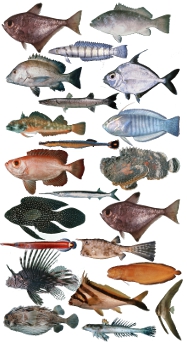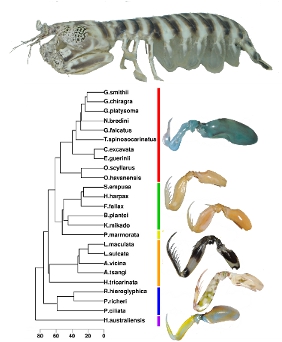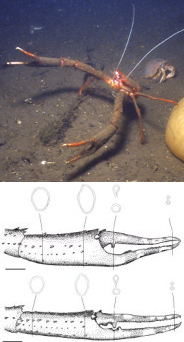
My research
Morphological diversity is probably the most intuitive representation of biodiversity, yet it remains poorly addressed. The evolution of morphology is non-trivial because it can result from a complex network of processes acting on specific regions or the whole body of organisms. For this reason, I use an integrative approach to address the following questions:
I mainly use crustaceans and fishes as model organisms because they both have experienced major radiations, exhibit extraordinary morphological diversity and occur in many environments.

Fish morphological diversity
In my present research, I study morphological diversity in fishes at a large taxonomic scale. The overarching aim of this project is to integrate ecological, functional and evolutionary knowledge to understand processes that drive the dynamic of diversification in fishes. I am particularly interested in understanding why some clades became extremely disparate while sister clades did not. This investigation includes the quantification of the whole body morphology of a large number of species across more than 50 families of fishes.

Evolution of the mantis shrimp raptorial appendage
In a previous research project, I studied the evolution of the raptorial appendage of mantis shrimp (Stomatopoda). These animals use their appendages either to capture and process prey or fight with conspecifics. These appendages are morphologically complex and are capable of moving at speeds comparable to the bullet of a gun. Furthermore, these structures exhibit an important inter-specific morphological disparity. Therefore, one of the fundamental goals of this research was to investigate what processes led these appendages to high specialization, permitting great mechanical performances, while allowing them to greatly diversify. Using morphological variations from a population of mantis shrimp, I first analyzed the underlying developmental organization of the appendages to discern whether some regions of the structure were morphologically independent from others. Then I measured variation across species and used comparative methods to link morphology to biomechanics and ecology. The findings of this research showed that modularity (the property of an organism to be divided in independent units) influenced the evolutionary dynamic of these appendages.

Selective pressures and the functional morphology of a squat lobster claw
For my dissertation research, I investigated the selective pressures influencing the morphology of a particular trait: the claw of the squat lobster Munida rugosa(Crustacea). One intriguing feature of this species’ claw is that different individuals of the same size can have very different claw morphology. To understand the function of this variability, I quantified the shape variation of claws and related it to agonistic interactions, population structure, animal growth, survival of individuals, and claw mechanics. The findings of this research suggest that sexual selection might have been an important selective pressure that influenced the evolution of claw morphology in this species.